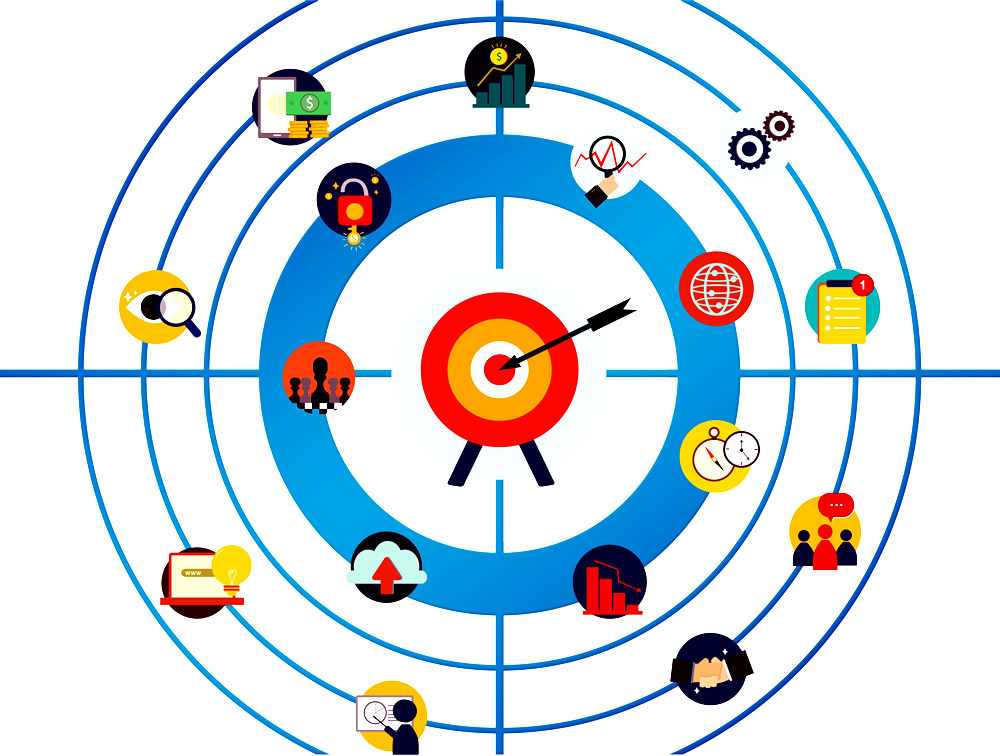Applications of Membership & Subscription Business Metrics. Comparing & Contrasting Startup Year vs. Subsequent Years
- This is page 2 of a 2-part article. If you landed here first, you might want to start on page one.

In applying the key metrics covered on the prior page, the subscription model entrepreneur or manager should be concerned about all facets of the relationship with their customers. You'll want to:

- observe fairly steady growth in newstarts, as they are both current revenue as well as your best upsell and cross-selling potential. They are also next year's very lucrative renewals (without a repeat of the typically heavy cost to acquire them).
- do whatever you can to stay close to your subscribers so that you can maintain an intimate understanding of their ever-evolving wants & needs. A good mechanism for objectively gauging their experience with your company can help you intelligently grow your business. A documented model that lays out exactly what happens to each newstart is essential in a professionally-run subscription business. It should clearly present at least these 2 things: how you motivate subscribers to 1) stick with you (sometimes called a nurturing or bonding program), and 2) buy other offerings from you (cross-selling & upselling model). If you don't have either very well fleshed out (in WRITING), we could help you do that... and probably offer many actionable recommendations to improve your results.
- work diligently to grow ARPS, ideally to several times your cost of acquisition (COA) to make each new subscriber very profitable, even in the first year. This often involves making smart decisions about new product development and ongoing marketing creative so that you have a steady stream of new things to offer... as well as fresh, new ways to motivate them to give you additional revenue. So much of subscription model success is about the subsequent transactions from subscribers AFTER transaction #1. We are generally able to help companies achieve many times their initial COA with smart upsell & cross-selling solutions.
One (lone) product models are often capped (upside revenue) models. Similarly, models that try to use the same old, tired marketing over and over are boring to a (high opportunity cost) fault. Good, fast growth models have new products and new messaging steadily developed to both woo prospects to become new subscribers and motivate a higher quality of customer as measured by ARPS. - strive to KEEP as many subscribers as possible. A common analogy used in this business model is the leaky bucket. Some companies get overly focused on pouring new customers into the top of the bucket and ignore the growing holes in the bottom... a "Don't worry... we'll make more" mentality. In such companies, there often comes a point when even the biggest marketing budget cannot pour enough new buyers into the top to compensate for the volume of subscribers being leaked away.
Efforts to save every sale is of paramount importance. It IS much cheaper to keep a subscriber than replace them. Almost all leaky buckets have holes that can be closed or significantly shrunk by simply choosing to do so... though it is always surprising how often even very successful subscription businesses neglect this particular opportunity.
How are those holes plugged? The key is doing the work to understand what motivates cancels & expires. Is it product quality? Is it an expectation gap between what the marketing promised and what they actually get? Is it a competition-driven issue(s)? Packaging? Pricing? Delivery? Etc. Great, ongoing market research- like our collective brilliance model- can help you shrink your own leaks. What would keeping a sizable chunk of those lucrative customers around for another couple of years mean to your numbers? We can help you do that. - establish a marketing model that consistently casts new lines in fresh ponds in search of new sources of profitable buyers. Each of those lines should be baited with some fresh creative being tested against established (proven) "control" creative. The biggest lifts will only be realized if at least some of this work is considered a failed test. What??? Seek out some fails??? Why would we ever want a failed test cell or two?

You can't get big returns without taking some bigger risks. No one finds massive pools of new business without suffering through some failures along the way. If you demand failure-free prospecting in your business, you are unlikely to find any major new sources of subscribers: those in charge of prospecting won't have the courage to take the necessary chances.
Many companies pressure their own talent into being too afraid to take risks large enough to yield some failures. As such, they are very likely missing big new successes too. Had Edison insisted a single try at the light bulb succeed, you might be reading this on a piece of parchment via candle light.
Even world-class marketers with relatively endless resources and deeper pockets than your company (like P&G and Apple) roll out flops sometimes. Reward requires risk. Big rewards require bigger risks...
Even award-winning, multi-million-dollar, best-of-the-best Superbowl commercials will be retired after a short amount of time. Why not use what is considered the pinnacle of advertising creative forever? Because tired marketing- no matter how great it is- loses effectiveness. FRESH creative is ALWAYS key to grabbing new interest.

If the marketing track record at your company has had no failures in a long time, you are actually doing it WRONG!

- You want to keep up with trends and many other factors that can affect your prospect pool. Today's lead streams are tomorrow's paying subscribers: the better you can understand them, the easier it becomes to motivate some of them to become newstarts. All subscription models must evolve with the times, changing trends and the overall market. Too many models get locked into old ways of doing things, which always limits their full potential to how well something that worked 5, 10 or 20+ years ago can still yield today. An eager willingness to try new things... to change with the times... is crucial to growing- instead of just trying to maintain- this kind of business.
Play offense HARDER than you play defense!
When Netflix launched, it was a DVD rental business by mail. Now the vast majority of its revenue doesn't involve physical discs at all. Eventually, the disc rental business will decline away to generating next to nothing in subscriber revenue. If Netflix clung to what worked as little as 12-20 years ago- as the major, entrenched company Netflix replaced did- it would eventually work its way right out of business. The point:
Regularly evolve to prosper
Clinging to the old ways- even if they were once THE ways- leads to stagnation & decline. If you think you may be clinging, fresh eyes & minds- like ours- can help you hop right back out front. As little as one 'big innovation' we help you uncover can make a huge impact.
FIRST-YEAR SUBSCRIPTION BUSINESS PAINS GIVE WAY TO SECOND-YEAR "WOW!" GROWTH
In general, the first year of a new startup is the hardest. Why?
- All business establishment fundamentals must be created from scratch. This includes product development, website development, branding, marketing plans & promotional creative, etc. In general, these are all of the things just about ANY business must assemble before it can go to market. We call this the "get ready" (to go to market) foundational assets. It is imperative to get these as right as possible, because everything else will build upon these assets... for many years to come.
- You'll have to spend some (out of pocket, borrowed and/or investor) cash if you want to proactively promote good-sized pools of prospective subscribers and...
You must market proactively if you want to grow quickly!
- You have no upsell or renewal revenue from existing customers because you have no existing customers yet.
- You have an unoptimized business model because it's brand new, so typical industry costs will probably be a bit higher... and typical industry ROI will probably be a bit lower in year one. Only time and measured testing through quality tactical execution gets any new model optimized to industry norms.
- Your website is not indexed or ranked for a chunk of the year. It's almost (search engine) invisible to global prospects that would be interested in your offerings. Imagine opening a retail store in the middle of nowhere and not telling anyone how to find it. That's a good analogy of how it is until the majors index your site. Advertising is one way to accelerate this visibility; otherwise, it can sometimes take many weeks before your website is indexed.
- Etc. There are many more but you get the picture. Year 1 is the tough year, as it generally would be for ANY business starting from scratch.

WHAT A DIFFERENCE A YEAR MAKES!
Things evolve for the (much) better by year 2+...
- All of the business establishment, "get ready" stuff is history; you don't have to create the business fundamentals again in year two. You already have them in place and they can work for you for this whole year (and beyond). If you created them to be great, they are still great.
- You should have an ever-building database(s) of leads and (paid) subscribers which can be leveraged to reduce promotional expenses. More simply, you might do some list swaps instead of having to pay all cash for good lead sources. You can even make surprisingly good money by discreetly renting marketing cracks at your list.
- You should have producing upsell and renewal models... both of which involve much less expense than brand new acquisition marketing. These sales yield high-margin cash (some of which you might use to further ramp up your new acquisition). This OPM (Other People's Money) can be a terrific way to scale up without reaching deeper in your own company pocket. Growing ARPS is VERY profitable.
- After testing and measuring through several campaigns and developing a good marketing rhythm, your marketing model should be considerably more optimized than where it started. You should also have a fairly strong base of more proven promotional creative and be well aware of a great selection of lead sources to promote (or promote again). This adds to your profit potential: model optimization expands your margins.
- Your well-established website should be fully indexed and ranked on all of the major search engines providing a no-cost flow of interested prospects and customers. Now buyers looking around for your kind of offerings can actually find YOU. Sell those ready to buy and use crafty lead hooks to woo those not quite ready into your lead database. Nurture those leads towards becoming buyers soon.
- Etc.
Basically, MANY very-lucrative business lifts begin to show up later in year one. Many of these continue to improve throughout year two+ as your knowledge grows and the various models are further refined towards optimal performance. With smart subscription models, things only get better with even more passage of time: Year 2 < Year 3 < Year 4 < Year 5 and so on.
Time is THE key ally for subscription model businesses. Patience is THE key trait of a manager/owner... to persevere long enough to harvest from much more lucrative years.
Big Innovations principals are deeply experienced in all facets of subscription business models at both the strategic and nitty-gritty levels. We doubt you could find any other subscription model consulting help with a richer breadth of knowledge on how to structure a new subscription business startup (or new strategic thrust) in the best possible way. Let us help you plan it right, implement it smoothly and maximize very important metrics like newstarts, ARPS, lifetime value, (relevant) lead captures and so on. Doing it all right the first time means you launch with confidence & strength.
This article naturally flows into another focused on Enhancing a Subscription Model...
Would you rather speak to a Big Innovations Expert right now?









